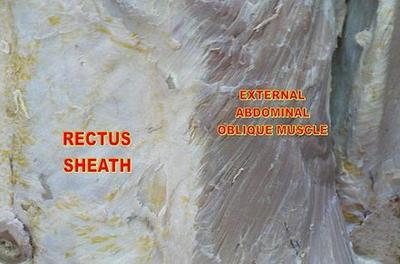For your good health. Always.
Menu
Enhance your health with free online physiotherapy exercise lessons and videos about various disease and health condition
Rectus Sheath Hematoma
by Joshua
(New York)
The terminal branches of the superior and inferior epigastric arteries course deep to the posterior aspect of the left and right rectus pillars and penetrate the posterior rectus sheath. Injury to these vessels or to any of the network of collateralizing vessels within the rectus sheath and muscles can result in a rectus sheath hematoma.
Causes for Rectus Sheath Hematoma
Although there may be a history of significant blunt trauma, less-obvious events also have been reported to cause this condition, such as
- 1 - sudden contraction of the rectus muscles with coughing, sneezing, or any vigorous physical activity
- 2 - Spontaneous rectus sheath hematomas have been described in the elderly and in those on anticoagulation therapy
Sign and Symptoms
Patients frequently describe the sudden onset of unilateral abdominal pain that may be confused with lateralized peritoneal disorders such as appendicitis. Below the arcuate line, a hematoma may cross the midline and cause bilateral lower quadrant pain.
History and Physical Examination
History and physical examination alone may be diagnostic. Pain typically increases with contraction of the rectus muscles and a tender mass may be palpated. The ability to appreciate an intra-abdominal mass is ordinarily degraded with contraction of the rectus muscles.
Fothergill's sign is a palpable abdominal mass that remains unchanged with contraction of the rectus muscles and is classically associated with rectus hematoma.
A hemoglobin/hematocrit level and coagulation studies should be obtained. Abdominal ultrasonography may show a solid or cystic mass within the abdominal wall, depending on the chronicity of the bleeding event. Computed tomography is the most definitive study for establishing the correct diagnosis and excluding other intra-abdominal disorders. Magnetic resonance imaging (MRI) also has been employed for this purpose.
Treatment for Rectus Sheath Hematoma
Specific treatment depends on the severity of the hemorrhage. Small, unilateral, and contained hematomas may be observed without hospitalization. Bilateral or large hematomas will likely require hospitalization, as well as potential resuscitation. The need for a red blood cell or coagulation factor transfusion is determined by the clinical circumstances. Reversal of warfarin (Coumadin) anticoagulation in the acute setting is frequently, but not always, necessary. Emergent operative intervention or angiographic embolization is required infrequently, but may be necessary if hematoma enlargement, free bleeding, or clinical deterioration occur. Surgical treatment consists of evacuation of the hematoma and ligation of any bleeding vessel identified. Mortality in this condition is rare, but has been reported in patients requiring surgical
treatment and in elderly.
Comments for Rectus Sheath Hematoma
|
||
|
||
|
||


